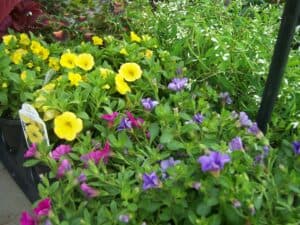By Jennifer Fairfield, owner Garden Mill
Even though the year is winding down, there may still be things you can or should do outdoors, weather permitting:
In the Garden:
- There’s still time to plant bulbs in SE Michigan. With expected highs in the 40’s this week, the ground won’t be freezing just yet, so take the opportunity to get in some last-minute bulbs (and take advantage of our current sale on them – All Spring-Blooming Bulbs are Half Off!!). You can also force some bulbs indoors this winter. Tulips and daffodils in bloom in your house in March can provide a welcome breath of spring, when it’s still winter outdoors and you can’t really do any gardening. You’ll need to provide your bulbs with a chilling period first – for as long as 12 weeks – so if you get them started now, you can have them in bloom before Easter. Forcing bulbs isn’t that hard to do, either. For easy-to-follow instructions, check out the Iowa State University’s Extension Service article.
- With the predictions of a milder winter, there comes the potential issue of frost heave in perennial gardens, due to the likelihood of multiple freeze-thaw cycles. Soil “heaves” up when freezing causes it to expand as the soil thaws and then freezes again. This causes damage to plants when roots are pushed up out of the soil. A good mulch cover works to keep the soil frozen during the winter, helping to prevent damage. Wait until the ground has frozen, then pile mulch around your perennials to help protect their roots from changing temperatures throughout the winter.
- Even with milder temperatures, you can expect that the ground will freeze for extended periods over the winter. When the ground is frozen, plants can’t take up water, and evergreens, because they retain their leaves, can lose what water they do have when it’s windy. This is especially an issue for broadleaf evergreens such as hollies, boxwoods, rhododendrons, azaleas, and euonymus. Consider spraying evergreens with an anti-desiccant to help keep them from drying out in the cold winter winds. Anti-desiccants put a thin, waxy layer (derived from pine sap), on the leaves, which helps the plant retain moisture. You can also use an anti-desiccant to help your fresh greens stay fresh this holiday season. If you’re bringing them indoors, give your wreaths, garland, swags, and cut branches a spray, then let them dry completely before bringing them inside. You can even treat your Christmas tree to help it last longer. It’s all-natural, bio-degradable, and non-toxic to eyes and skin.
- If you put up stakes for wind barriers around your shrubs and small trees last month, now is the time to put up the actual barriers, if you haven’t yet. Burlap is a great choice, because it allows some air flow, but provides protection from the worst drying effects of the wind. I use cable ties, commonly referred to as “zip” ties, to attach the burlap to my stakes. The screen should be placed along the west and southwest sides of the plant, and possibly all around, depending on where your plants are placed, and how much wind they are getting. Do not totally cover the plants – leave the top open – so they can get sun. The screen can also provide some protection against deer. The University of Minnesota Extension offers more details on protecting your plants from all kinds of winter injuries, including animals.
- One concern when the prediction is for a milder winter is that when we get snow, it is often the wet, heavy kind. We also often get more ice during these sorts of winters. With either comes the potential for damage to trees and shrubs. Heavy snow can weigh down and potentially break branches, but it’s easy to do more harm than good, if you’re not careful. Use a broom, and gentle upward motions to sweep away the snow. Banging on frozen branches to shake off snow can break them. For ice-covered branches, it’s better to leave them alone. There is pretty much nothing you can do that doesn’t have the potential to cause more damage.
- There are some things you can do over the winter months if you just can’t stand to go that long without doing something resembling gardening (I know I can’t!).
- Sow onion seeds now for great onions next summer.
- Plant basil and other herbs in pots to keep under grow lights to add a little fresh-from-the-garden taste to your cooking.
- Grow leaf lettuces in a bowl under grow lights for fresh salads all winter.
- Pot up tulips, daffodils, and crocuses for beautiful blooms in late winter.
For the Birds:
- Winter can be really tough on birds, because their main sources of food – insects, fruits, and seeds – are no longer available. Providing food for the birds during the cold months helps them save energy they would otherwise have to use in searching for it. So, keep your feeders clean and filled throughout the winter. Foods that contain suet, meal worms, peanuts, and black oil sunflower seeds are best for providing the high levels of protein and fat that birds need to stay warm during cold winter nights.
- Providing a source of water for birds is also important. Just as it is for us, water is essential to birds, but fresh water becomes hard to find when everything is frozen. A de-icer in the birdbath or a heated birdbath can offer your birds a regular source of fresh water all winter long. Just be sure to clean the bath regularly, and keep it filled.
- If you’re looking for something fun to do this winter, the annual Christmas Bird Count, which happens all over the country between Dec. 14 and Jan. 5, and the Great Backyard Bird Count, which happens in February, are fun ways to help the birds and the people who study them. There is a Christmas Bird Count in Ann Arbor on Dec. 16. Details are here, but if you’re in a different area, you can find a count near you with this map. You can participate in the Great Backyard Bird Count in your own backyard.



















